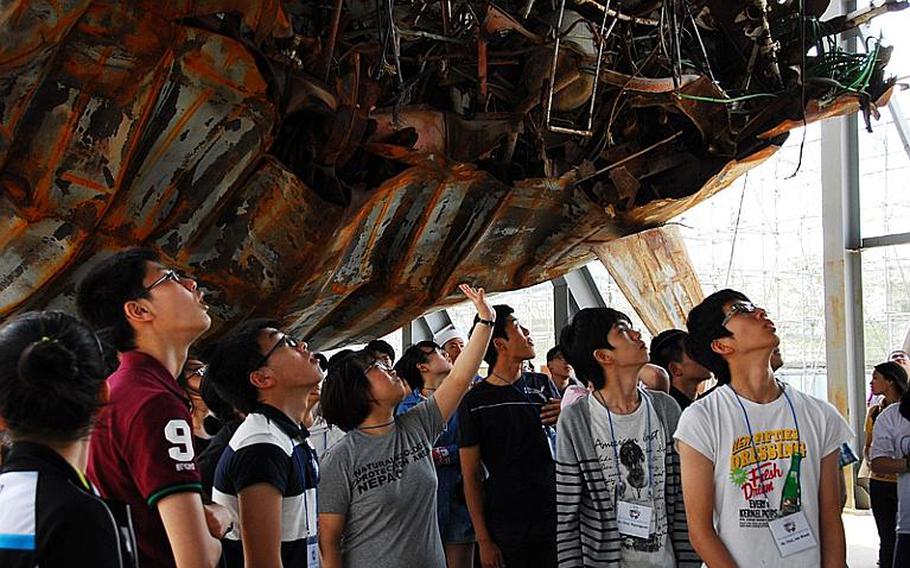
Participants in USFK's Good Neighbor Program English Camp examine the wreckage of the Cheonan, the South Korean ship hit by a North Korean torpedo during a visit to a South Korean naval base in 2011. Since the ship was put on display following the March 2010 attack, more than 350,000 have viewed the wreckage. (Ashley Rowland/Stars and Stripes)
SEOUL — Hundreds of thousands of people have visited the wreckage of the Cheonan, the South Korean corvette destroyed by a North Korean torpedo, since it was put on display at a South Korean naval base nearly two years ago.
The Cheonan was split in two on March 26, 2010, while on a routine patrol in the Yellow Sea near Baeknyeong Island and the disputed sea demarcation line between the two countries. Forty-six sailors died in the attack, which racheted tensions on the divided peninsula to the highest point since the Korean War.
A South Korean navy spokesman said more than 354,000 people visited the ship at the Second Navy Fleet Command in Pyeongtaek between May 24, 2010 and March 15 of this year. The visitors included 130,000 South Korean troops, 160,000 South Korean civilians and 10,900 foreigners. A number of businesses, including conglomerates Samsung and Hyundai, have sent employees to view the wreckage, and 53,900 students have visited on school field trips.
The spokesman said the navy is not surprised by the amount of interest in the ship, because people want to view the wreckage themselves in order to resolve their suspicions about how the warship was destroyed.
“We want people to see North Korea’s provocation with their own eyes and realize the importance of security,” he said.
After the attack, a number of people questioned whether North Korea was responsible for the sinking, with some claiming the South Korean government had orchestrated the attack to shore up support for its policies toward the North. A South Korean-led international investigation team that included U.S. experts determined that a North Korean submarine fired a torpedo that sank the Cheonan, though North Korea has repeatedly denied involvement in the attack.
The Chosun Ilbo newspaper reported Tuesday that 71.3 percent of South Koreans believe North Korea was responsible for the sinking of the Cheonan — an 8.7 percent drop from a year ago. Distrust in the government’s explanation for the attack was highest among those in their 20s and 30s, with only 55.8 percent saying they believed the South Korean government.
In contrast, nearly 75 percent of respondents in their 40s and 85 percent of respondents in their 50s believed North Korea sank the Cheonan, according to the Chosun Ilbo.